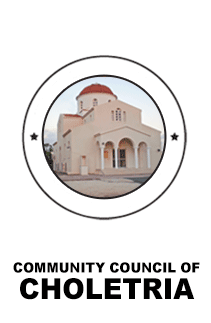| It is very important for a community, to be built on two small hills and in the ridge of two rivers, Xerou and Diarizou. Because of this it appears that, in the Holetria village we find a fruitful and fertile ground. The residents have been cultivating their land for many years now, but many of the residents were cattle-breeders. Many people actually lived from these occupations, a thing that shows that this was their only bread-winning profession.
In the agriculture sector the vines, varieties of wine making, the cereals, plants, the citrus fruits, almond trees, the olives, the locust and few legumes are cultivated.
The cattle breeding sector, appears to flourish in a very good level. In 1985 many sheep were raised, around 1300, goats were around 500, cows were near 10, pigs were around 30 and chickens around 500. It is worth to note here, that a lot of milk is produced by the sheep and the goats, which is channelled in the market, either for pasteurization of fresh milk, or for the manufacture of traditional and genuine haloumi.
AVICULTURE
It is a little strange for the Cypriot data, for ostriches to be raised in Cyprus. In the beautiful community of Holetria, in Paphos, we will find a big farm, which has this bird in, which is called ostrich.
In a big plot, in the west of the village and in distance of 1 km from the village, the first farm of ostriches was created in 1999.
With the initiative of Mr Socrates Ioannou and the Mr Klitou Neofytou, 60 birds were bought, aiming to grow the enterprise and to make it tradable, in the Cypriot market.
The big plot of 20 acres was separated in streets, corridors and the proportional fencing externally was made. An important enemy of ostrich is the Human. In order therefore for the access with the car to be easier, the streets and corridors were made. The place has been subdivided again in smaller items of 1600 m2, where inside this item; a roofed place was also created, around 16 m2, in order to accommodate the birds at rainy days. In each item 6 birds, 2 male and 4 female are taken in. The food that is nourished daily by the birds comes out through special diet, that is prepared by a doctor and it is made from special components that are constituted by various plant species. In the roofed place there are: the system of automatic flow of water and special food pots, where the food is placed in a way, so that people do not come in contact with the birds.
Few metres below there is another farm, with a capacity of 50 ostriches.
But let’s look at the description of the ostrich more extensively.
Where it comes from, where it lives and what are its habits.
It is a bird from the sparrow family. It is the biggest bird in the world, that lives today.
The male adult can reach 2, 5 metres height – the half of the height, covers the neck - and 150 kilos weight, while the female, and is a little smaller. Her egg, the biggest live type, has 150 millimetres length, 125 millimetres diameter and weights 1, 35 kilograms! The plumage of the male is black, with impressive white feathers, in the atrophic wings and in the tail, while the females are brown. The head and most part of the neck, is reddish up to bluish, they are covered by plumule, while the legs, included the vigorous, muscular thighs, are naked. The small head has a short, wide beak and big brown eyes, with bushy black eyelashes.
It usually lives in flocks 5 up to 50 animals, with mammals (gazelles and antelopes). It avoids its enemies, mainly the human and the big carnivores, due to its powerful legs, that have two fingers as hoofs. When it is threatened, it can develop speed of 65 kilometres per hour, while if it cannot escape, it gives dangerous kicks.
The Ostriches are mainly vegetarians and can do without water for big periods, being adapted to live in the subtropics deserts and steppes.
At the reproductive period, the males form a harem, from 3-5 females, whom they attract with cries and reedy shouts. The communal nest is manufactured deep in the soil and includes 15-60 eggs that alternately hatch, sometimes the male at night and sometimes the female during the day. The nestlings are brood after 40 days, and after 1 month, they are capable to follow the adult animals in their removals. In order to escape from the attention of their enemies, both the nestlings and the adults; lay down in the soil, with their neck horizontally strained; a habit that can lead to the myth that, when the Ostrich is threatened it hides its head in the sand.
Their feathers used to ornament the helmets of the European kings in medieval years, while at the 19th century; there were coveted accessories, of the feminine clothing. Their successful sale, led to the creation of farms in South Africa, in USA, in Australia etc, with appreciable trade that bloomed up to the beginning of the 20 th century.
Soft leather products are manufactured by their thin Skin. They can stand in captivity, where they can live even 50 years, while occasionally they exercise for speed games.
|
